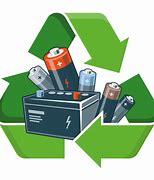 Health and safety on waste sites and when managing waste has never been so important. There are so many hidden dangers and hazards from, for example:
Health and safety on waste sites and when managing waste has never been so important. There are so many hidden dangers and hazards from, for example:
National Operational Guidance (NOG) that has been written for the UK Fire and Rescue Service (FRS) reports over 300 waste fires per year. And according to Material Focus batteries cause “three and half times more” fires in the waste stream than previously reported. They also shared that more than 700 fires in bin lorries and recycling centres were caused by batteries that had been dumped into general waste.
One of the biggest challenges when dealing with waste fire are deep seated fires which start at the centre of a rubbish pile (typically there are two types of waste fires, surface fires and deep-seated fires).
Don’t let waste build up. When dealing with waste on a waste site ensure that there is a process in place to separate, segregate and dispose of the waste. The risk of fire is greater when there is more waste for longer periods of time. The more waste there is the further a fire will spread and larger piles are more likely to self-combust if stored for longer periods of time. To reduce the risk, reduce the amount of waste being stored.
Segregation is important, ensure there are gaps, spaces between piles of waste, most guidance suggests having breaks of at least 6m.
Ensure the site is secure and has CCTV; arson can be a big problem on waste sites.
Ensure that the site has a strict no smoking policy.
The UK FRS NOG fires on waste sites guidance is a useful resource as is the Waste Industry Safety and Health Forum (WISH) document, Reducing fire risk at waste management sites.
Carry out a risk assessment that:
The BBC recently reported that single use vapes are sparking surges in fires at UK waste sites. They indicated that a whopping “1.3million disposable e-cigarettes discarded every week often end up in general waste and their broken batteries are highly flammable”. The document suggests that many waste sites are now using “artificial intelligence to detect vapes and their lithium-ion batteries, as well as installing thermal imaging cameras and automatic foam jets.”
Costs and impacts to the industry
Insurance companies are becoming nervous and many are refusing to insure waste sites, or are imposing huge annual premiums.
A study carried out in 2021 suggests that lithium-ion batteries are responsible for almost half of the UK’s waste fires with an estimated cost of around £158m to the UK economy.
When there are fires on waste sites, the environmental impact is significant which can result in fines being imposed by the Environment Agency (EA) or Health and Safety Executive (HSE).
Many consumers do not understand the problems or risks and even the hazards associated with batteries. Typically, they are not taken to local battery disposal bins (often provided at local supermarkets), and they are hidden in their usual household waste.
Scott Butler, Executive Director of Material Focus said: “People should never bin their electricals or their portable batteries. If they can, they should remove any hidden batteries from their electricals and recycle the batteries and electricals separately. If they can’t remove the batteries, they should recycle their electricals separately as always. Having listened to the numerous stories of flames engulfing waste and recycling trucks as they drive down residential streets, it’s important that we all take action now to keep our streets, householders, waste and local authority staff, and fire fighters safe. People can find their nearest recycling point for batteries and electricals by visiting our recycle your electricals website.”
Mark Andrews, National Fire Chief’s Council Waste fires lead said: ” We urge people to recycle electricals and batteries and not to dispose of them with general household waste. People are often surprised to hear that batteries can cause fires in both bin lorries and waste plants, but they do and as we use and dispose of more electronic devices these incidents are not rare. These fires can be challenging for fire services to deal with, have a significant impact on local communities and present a real risk to staff working on lorries and waste plants. Everyone can do their bit and prevent fires by ensuring they dispose of electrical items correctly.”
Lithium batteries are extremely challenging as damaged and defective batteries are significantly more dangerous as they can lead to thermal runaway. Therefore, it is important to raise awareness and improve the way that consumers dispose of these batteries. Many are calling for a change in legislation in fact The British Metal Recycling Association (BMRA) has called for new rules to prevent households throwing away unwanted electrical equipment.
Problems with lithium batteries include:
Warning signs that a lithium-ion battery or cell is likely to fail include:
Until the safe disposal of lithium batteries is more heavily regulated it is important to take care when dealing with waste lithium batteries. Always ensure that a risk assessment is carried out and that there are suitable and sufficient controls in place to minimise the consequences. If in doubt, seek advice from an expert.
Please contact us if you require further information.
 As of Monday 3rd July, Health and Safety Executive (HSE) inspectors have begun a targeted inspection initiative focusing on manufacturing businesses where materials that contain silica are used. This will include brick and tile manufacturers and foundries. Their Dust Kills campaign is well underway.
As of Monday 3rd July, Health and Safety Executive (HSE) inspectors have begun a targeted inspection initiative focusing on manufacturing businesses where materials that contain silica are used. This will include brick and tile manufacturers and foundries. Their Dust Kills campaign is well underway.
The inspections, which start Monday 3 July, are checking that employers and workers know the risks involved when dealing with respirable crystalline silica (RCS) and that businesses have control measures in place to protect workers’ respiratory health.
It is estimated that around 500 deaths occur every year in Great Britain as a result of workplace exposures to RCS.
ARE YOU AWARE OF THE RISKS ?
Inspectors are checking that employers and their workers know the risks and have control measures in place to prevent exposure to RCS which can cause irreversible lung disease if breathed in over time.
Employers should talk to their workers about the risks, and how to avoid them. Make sure they understand how a job should be done safely without creating risks to their health.
Silica is a natural substance found in most stones, rocks, sand, and clay. Silica particles are produced during many manufacturing tasks involving these materials. Over time, exposure to silica particles can harm a worker’s ability to breathe and cause irreversible, often fatal, lung diseases.
UNDERSTAND THE DANGERS!
Exposure can cause serious health problems and may lead to an early death. By breathing it in, your workers could develop the following lung diseases:
HSE’s head of manufacturing David Butter said: “It’s important that manufacturing businesses act now to ensure they comply with the law and protect their workers from serious lung diseases. Businesses should take note that good ventilation in the workplace and personal protective equipment are just some of the measures they need in place to protect the respiratory health of workers.”
Contact us for further information.
Guest post
 Bees are essential for the health of people and the planet. Honey and other products have medicinal properties, and the role of bees as pollinators makes them vital for food supplies.
Bees are essential for the health of people and the planet. Honey and other products have medicinal properties, and the role of bees as pollinators makes them vital for food supplies.
There are around 20,000 known bee species worldwide. Humans only manage a few of these, and most species are wild.
As well as valuing bees for their honey, people have come to recognise the importance of bees in promoting food security and variety in plants and animals.
However, a rise in factors, such as pesticide use and urbanisation, means that bees are currently in decline, negatively affecting many of the Earth’s ecosystems.
A loss of bees would affect honey supplies, but, more importantly, world food security and biodiversity. Without them, the world could be a very different place.
How does this affect humans?
Farming practices, global warming, and disease are just a few reasons why bee numbers are declining. Experts are concerned about the impact on world food supplies, especially fruits, nuts, and vegetables.
They say that without bees, there will be no more nuts, coffee, cocoa, tomatoes, apples, or almonds, to name a few crops. This could lead to nutritional deficiencies in the human diet, as these products are essential sources of vital nutrients.
Additionally, the emerging medicinal properties of bee venom and other bee products may never be accessible without bees to provide them.
In financial terms, the pollination of fruits and vegetables by wild bees has a high economic value. One study found that wild bees were responsible for a significant portion of net income from blueberries. There is a direct link between the economic yield of farmers and the presence of bees.
What can you do to help?
Green backyards and gardens can be vital resources for bees. Growing native flowers and leaving weeds to develop can contribute to bee health and numbers by providing food and shelter. Reducing landscaping activities, such as mowing or pruning, can help bees by increasing the amount of vegetation available. As well as benefitting the bees, increasing rural spaces in urban areas can boost human mental and emotional well-being.
It is undeniable that bees are a critical part of the maintenance and flourishment of biodiversity on our planet. By minimising the risks that these insects face within their natural habitat, you can play a part in helping to protect and enhance biodiversity across our world to ensure the cycle of life continues to turn.
Sponsorship
Walker Health and Safety Services have sponsored a beehive. Emma had the opportunity to build a hive on 8th July 2023 with Barry, one of the many volunteers at Shropshire Beekeepers in Shrewsbury. Emma homed a Queen, worker bees and drones. We managed to get some lovely photos of the new hive, the bees, the honeycomb, the brood and the eggs. If you would like to sponsor a beehive or donate money to the charity, please follow this link. Shropshire Beekeepers Association | Shropshire Beekeepers Association (shropshirebees.co.uk)
Contact us for further information.
 There’s no denying we’re all enjoying this beautiful sunshine! But when it comes to working in this heat or even working outside in this heat, we need to ensure our colleagues and employees are working safely.
There’s no denying we’re all enjoying this beautiful sunshine! But when it comes to working in this heat or even working outside in this heat, we need to ensure our colleagues and employees are working safely.
Working in the sun and hot weather poses serious risks to health. Make sure you’re working safely.
Even in the temperate climate of the UK, working in the sun and hot weather presents risks to your health, which are heightened for those who work outside. One of the most serious risks is skin cancer. Skin cancer is the most common type of cancer in the world, with occupational UV exposure being an attributable factor in one death and five new cases of skin cancer per week in Britain.
There’s no law for maximum working temperature, or when it’s too hot to work, because every workplace is different.
No meaningful upper limit can be imposed because in many indoor workplaces high temperatures are not seasonal but created by work activity, for example in bakeries or foundries.
However, employers must stick to health and safety at work law, including:
What the law says
The Workplace (Health, Safety and Welfare) Regulations require employers to provide a reasonable indoor temperature in the workplace.
This depends on the work activity and the environmental conditions.
The Construction (Design and Management) Regulations require reasonable workplace temperatures for indoor areas of construction sites.
Where the site is outdoors, you must provide protection from adverse weather. Site rest facilities must also be maintained at an appropriate temperature.
Under the Management of Health and Safety at Work Regulations, employers must:
Temperature in the workplace is one of the risks you should assess, whether the work is being done indoors or outdoors. You should consult with workers or their representatives on the best ways to cope with high or low temperatures.
Outdoor working
HSE guidelines state that UV radiation should be considered an occupational hazard for those who work outdoors. Therefore, employers of outdoor workers have a legal duty to safeguard, as far is reasonably practical, their employees from the effects of UV radiation.
When working outdoors, the weather can have a serious impact on worker’s health if the risks have not been properly managed.
This impact may be immediate or occur over a longer time, leading to conditions like skin cancer.
The weather can also affect a worker’s ability to keep safe, for example when handling machinery.
There are several ways to keep yourself and your employees safe from the effects of UV radiation exposure when working outdoors:
Heat exposure
Working in the heat presents an additional set of risks, such as exhaustion and heat stroke.
Steps that you can take to protect yourself:
Steps that employers can take to protect workers include:
Contact us if you require assistance.
Sources used: https://www.hse.gov.uk/temperature/employer/outdoor-working.htm
Focusing on anxiety for this year’s Mental Health Awareness Week will increase people’s awareness and understanding of anxiety by providing information on the things that can help prevent it from becoming a problem. At the same time, we will keep up the pressure to demand change – making sure that improving mental health is a key priority for the government and society as a whole.
Follow help and advice on social media
Keep up with the latest on this year’s Mental Health Awareness Week.
Order a green ribbon – here.
Make a donation to the mental health foundation – here.
Contact us if you require further information.
Contact us if you require health and safety advice.